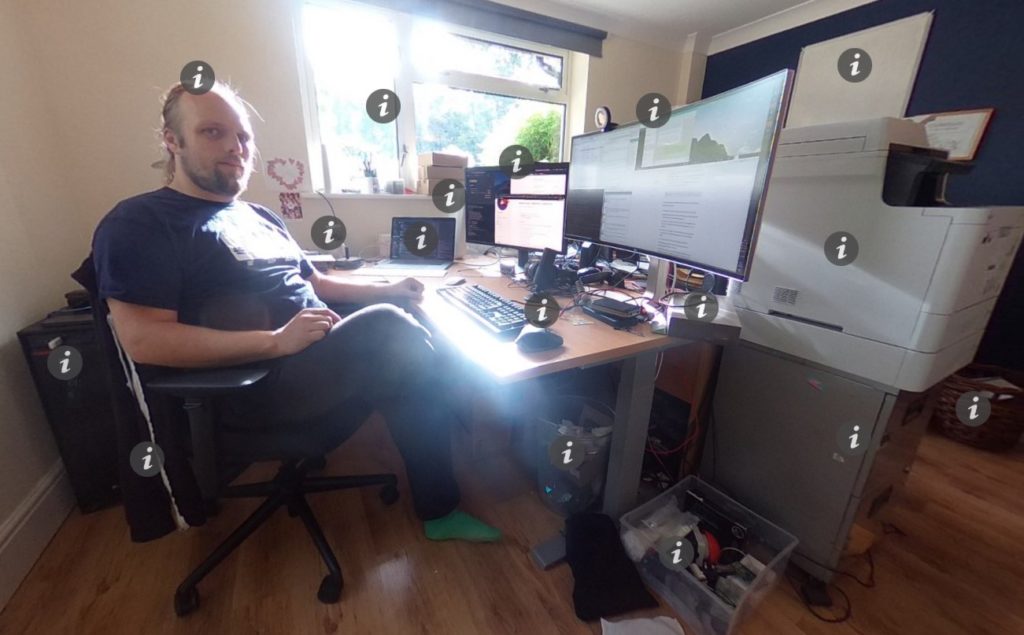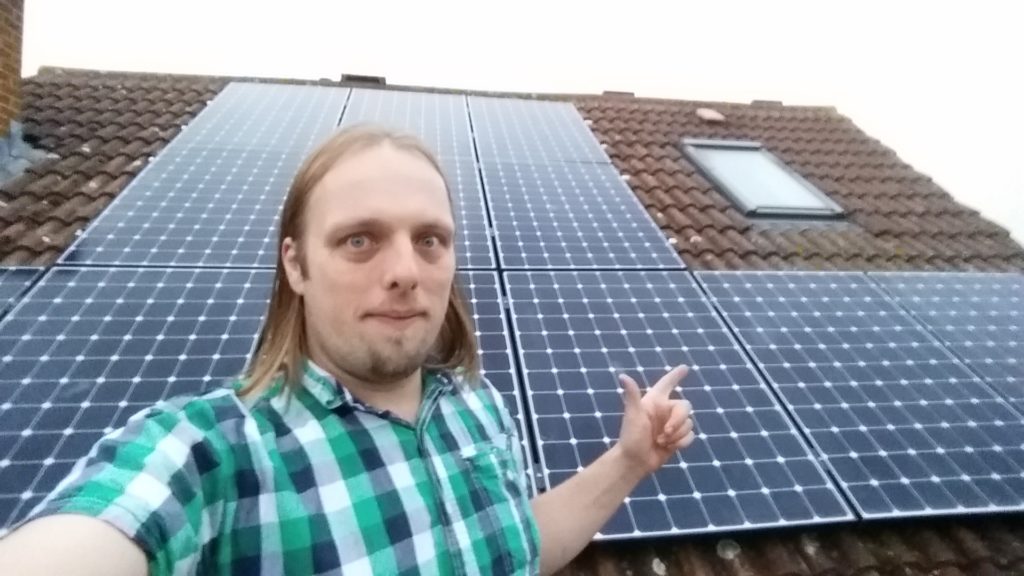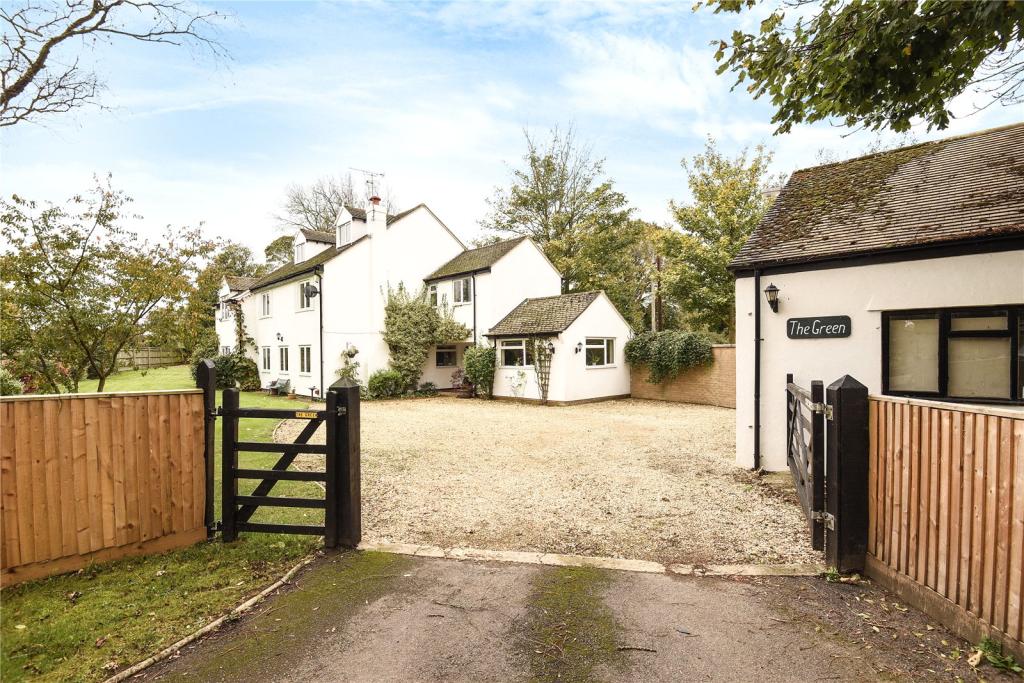This weekend I invited over a bunch of our old university buddies, and it was great.
We still didn’t feel up to a repeat of the bigger summer party we held the year before last, but we love our Abnib buddies, so put the call out to say: hey, come on over, bring a tent (or be willing to crash on a sofa bed) if you want to stay over; we’ll let the kids run themselves ragged with a water fight and cricket and football and other garden games, then put them in front of a film or two while we hang out and drink and play board games or something.
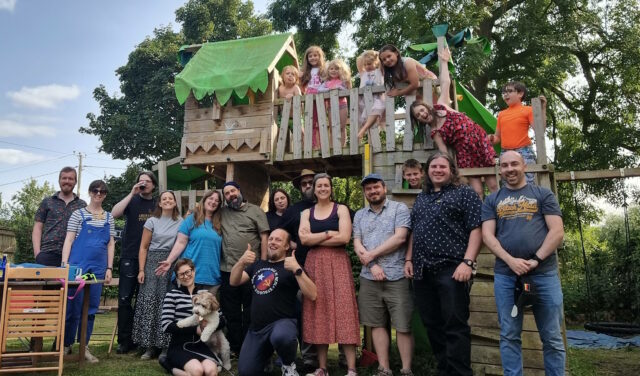
The entire plan was deliberately low-effort. Drinks? We had a local brewery drop us off a couple of kegs, and encouraged people to BYOB. Food? We threw a stack of pre-assembled snacks onto a table, and later in the day I rotated a dozen or so chilled pizzas through the oven. Entertainments? Give the kids a pile of toys and the adults one another’s company.
We didn’t even do more than the bare minimum of tidying up the place before people arrived. Washing-up done? No major trip hazards on the floor? That’s plenty good enough!
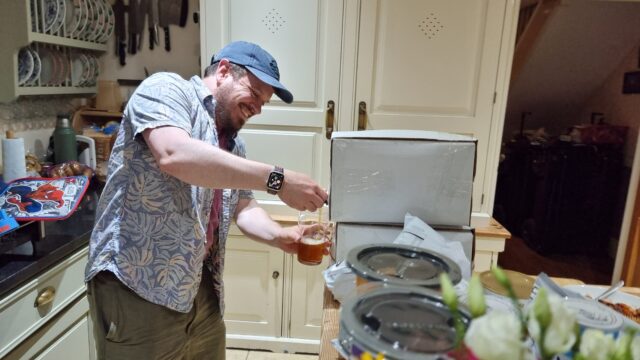
I found myself recalling our university days, when low-effort ad-hoc socialising seemed… easy. We lived close together and we had uncomplicated schedules, which combined to make it socially-acceptable to “just turn up” into one another’s lives and spaces. Many were the times that people would descend upon Claire and I’s house in anticipation that there’d probably be a film night later, for example1.
I remember one occasion a couple of decades ago, chilling with friends2. Somebody – possibly Liz – commented that it’d be great if in the years to come our kids would be able to be friends with one another. I was reminded of it when our eldest asked me, of our weekend guests, “why are all of your friends’ children are so great?”
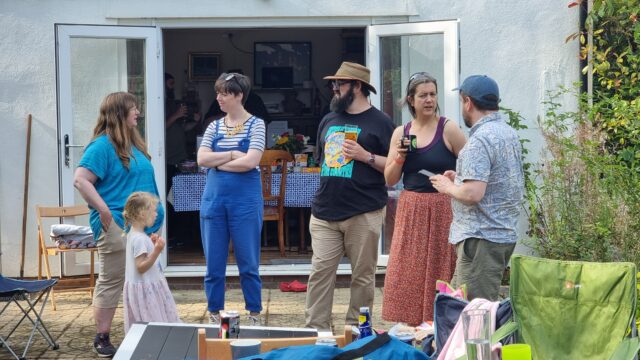
What pleased me in particular was how relatively-effortless it was for us all to slip back into casually spending time together. With a group of folks who have, for the most part, all known each other for over two decades, even not seeing one another in-person for a couple of years didn’t make a significant dent on our ability to find joy in each other’s company.
Plus, being composed of such laid-back folks, it didn’t feel awkward that we had, let’s face it, half-arsed the party. Minimal effort was the order of the day, but the flipside of that was that the value-for-effort coefficient was pretty-well optimised3.
A delightful weekend that I was glad to be part of.
Footnotes
1 That Claire and I hosted so many social events, both regular and unplanned, eventually lead us to the point that it was the kind of thing we considered whenever we moved house!
2 Perhaps at the Ship & Castle, where we spent a reasonable amount of our education.
3 I’m pretty sure that if I’d have used the term “value-for-effort coefficient” at the party, though, then it’d have immediately sucked 100% of the fun out of the room.
